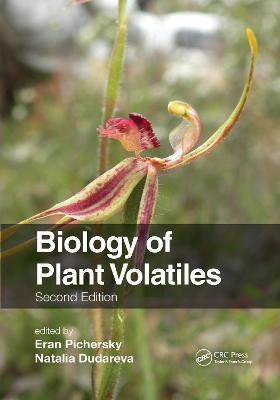
Biology of Plant Volatiles
CRC Press (Verlag)
978-1-032-33614-5 (ISBN)
Plant volatiles—compounds emitted from plant organs to interact with the surrounding environment—play essential roles in attracting pollinators and defending against herbivores and pathogenes, plant-plant signaling, and abiotic stress responses. Biology of Plant Volatiles, with contributions from leading international groups of distinguished scientists in the field, explores the major aspects of plant scent biology.
Responding to new developments in the detection of the complex compound structures of volatiles, this book details the composition and biosynthesis of plant volatiles and their mode of emission. It explains the function and significance of volatiles for plants as well as insects and microbes whose interactions with plants are affected by these compounds. The content also explores the biotechnological and commercial potential for the manipulation of plant volatiles.
Features:
Combines widely scattered literature in a single volume for the first time, covering all important aspects of plant volatiles, from their chemical structures to their biosynthesis to their roles in the interactions of plants with their biotic and abiotic environment
Takes an interdisciplinary approach, providing multilevel analysis from chemistry and genes to enzymology, cell biology, organismal biology and ecology
Includes up-to-date methodologies in plant scent biology research, from molecular biology and enzymology to functional genomics
This book will be a touchstone for future research on the many applications of plant volatiles and is aimed at plant biologists, entomologists, evolutionary biologists and researchers in the horticulture and perfume industries.
Eran Pichersky, Natalia Dudareva
Part 1: Chemistry of plant volatiles 1. Practical approaches to plant volatile collection and analysis 2. Analysis of internal pools of plant volatiles 3. Bioassay-guided semiochemical discovery in volatile-mediated specialized plant-pollinator interactions with a practical guide to fast-track progress 4. The Chemical diversity of floral scent 5. Vegetative and fruit volatiles for human consumption Part 2: Biochemistry, molecular biology, and evolution of plant volatiles 6. The role of transcriptome analysis in shaping the discovery of plant volatile genes: past, present, and future 7. Flux distribution dynamics at the interface of central carbon metabolism and terpenoid volatile formation 8. Floral scent metabolic pathways and their regulation 9. Biosynthesis and regulation of vegetative plant volatiles 10. Biosynthesis and regulation of fruit volatiles 11. Biosynthesis and regulation of below-ground signaling molecules 12. Evolution of scent genes 13. Volatiles in glands 14. Emission and perception of plant volatiles Part 3: Plant-plant, plant-insect and plant-microbial interactions 15. Floral volatiles for pollinator attraction and speciation in sexually deceptive orchids 16. Behavioral responses to floral scent: experimental manipulations and multimodal plant-pollinator communication 17. Herbivore-induced plant volatiles as a source of information in plant-insect networks 18. Belowground plant volatiles: plant-plant, plant-herbivore and plant-microbial interactions 19. Tree volatiles: effects of biotic and abiotic factors on emission and biological roles Part 4: Commercial Aspects of Plant Volatiles 20. Metabolic engineering of plant volatiles: floral scent, flavors, defense
| Erscheinungsdatum | 01.06.2022 |
|---|---|
| Zusatzinfo | 26 Illustrations, color; 53 Illustrations, black and white |
| Verlagsort | London |
| Sprache | englisch |
| Maße | 178 x 254 mm |
| Gewicht | 911 g |
| Themenwelt | Naturwissenschaften ► Biologie ► Botanik |
| Weitere Fachgebiete ► Land- / Forstwirtschaft / Fischerei | |
| ISBN-10 | 1-032-33614-5 / 1032336145 |
| ISBN-13 | 978-1-032-33614-5 / 9781032336145 |
| Zustand | Neuware |
| Informationen gemäß Produktsicherheitsverordnung (GPSR) | |
| Haben Sie eine Frage zum Produkt? |
aus dem Bereich


